A heritage to save
- Categorized in: 2007, ΕΚΔΗΛΩΣΕΙΣ
The first European Parliament resolution officially critical of the situation of degradation and systematic despoliation which the artistic and cultural heritage of the north of Cyprus is suffering – occupied at it has been for 32 years by the Turkish army – goes back to 3 July 2006. The President of the Republic of Cyprus himself, Tassos Papadopoulos, visited Benedict XVI on 10 November last presenting him with an album of photographs documenting the gravity of the problem.
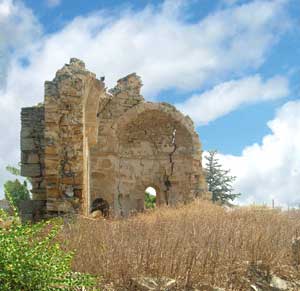 The images presented by 30Days in these pages have mostly never been published before. Only since 2003 in fact are the Greek-Cypriots allowed to cross the border between the Republic of Cyprus and the area under Turkish control. Since then, the country’s chief cultural institutions, such as the Byzantine Museum of the “Archbishop Makarios III” Foundation and the Museum of the Monastery of Kikkos, have been monitoring the situation in the territory and have succeeded in putting together an archive of nearly 20 thousand digital photos of the approximately five hundred Byzantine churches and the seventeen monasteries located in the north of the island, dating from the early Christian period up to the modern period, through the Byzantine age and the period of French (11th-15th century) and Venetian (15th-16th century) domination: an artistic patrimony of exceptional value, in large part lost or crumbling. The images testify to the urgent need to intervene to safeguard the historical, cultural and religious heritage of the area. It is to the merit of Ioannis Eliades, curator of the Byzantine Museum of Nicosia, and Charalampos Chotzakoglou, Professor of the History of Byzantine Art at the University of Athens, that this material has been made available. It forms the basis of a traveling exhibition that is planned to visit all the capitals of the European Union.
The images presented by 30Days in these pages have mostly never been published before. Only since 2003 in fact are the Greek-Cypriots allowed to cross the border between the Republic of Cyprus and the area under Turkish control. Since then, the country’s chief cultural institutions, such as the Byzantine Museum of the “Archbishop Makarios III” Foundation and the Museum of the Monastery of Kikkos, have been monitoring the situation in the territory and have succeeded in putting together an archive of nearly 20 thousand digital photos of the approximately five hundred Byzantine churches and the seventeen monasteries located in the north of the island, dating from the early Christian period up to the modern period, through the Byzantine age and the period of French (11th-15th century) and Venetian (15th-16th century) domination: an artistic patrimony of exceptional value, in large part lost or crumbling. The images testify to the urgent need to intervene to safeguard the historical, cultural and religious heritage of the area. It is to the merit of Ioannis Eliades, curator of the Byzantine Museum of Nicosia, and Charalampos Chotzakoglou, Professor of the History of Byzantine Art at the University of Athens, that this material has been made available. It forms the basis of a traveling exhibition that is planned to visit all the capitals of the European Union.
A little history
It was on 20 July 1974 that Turkish troops disembarked in the north of the island, quickly managing to take control of a third of the country. A few years later, in 1983, the area proclaimed itself the “Turkish Republic of Northern Cyprus”, an entity never acknowledged by the international community and only recognized by Ankara. Still today, this territory – little more than three thousand square kilometers – is garrisoned by 40,000 soldiers and divided from the rest of the island by a long tract of barbed wire under the control of the UN troops. A line that since then also physically divides the two main ethnic groups who have co-existed on the island for centuries: Greek-Cypriots, of the Orthodox faith (82%, with some Latin, Maronite and Armenian minorities), and Turkish-Cypriots, Muslims (18% per cent), who descend in part from the Ottomans who governed Cyprus from 1571 to 1878, in part from Greeks or Latins who were converted to Islam during the dominion of the Sublime Porte.
Over the last thirty years 160,000 settlers from Central Anatolia have been brought into the north by the Turkish government, thus modifying the demographic composition of the area, putting the Turk-Cypriots in the minority. One result is that there is now a widespread tendency for the latter to emigrate to the United States, Great Britain and Australia: a drain that has reduced their numbers from 135,000 to 80,000.
The first steps in dialogue
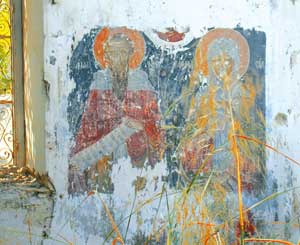 The problem remained on paper until the end of the ’Nineties, despite the many resolutions of the United Nations asking for the withdrawal of Turkish troops and re-unification of the country. But when the request of Cyprus to join the European Union was accepted in 1999, long talks began, under the aegis of the UN, to find a negotiated solution, before the island entered Europe with full rights. It was the Secretary General Kofi Annan who assumed the responsibility of conducting the negotiations. His final proposal was rejected in the popular referendum of 24 April 2004. A week later, the European Union nonetheless accepted the entry of Cyprus as a state including the north of the island, in which the so-calledAcquis communautaire, the set of norms and conventions accepted by the member countries, still remains suspended. Only last July did the parties resume the task of restarting talks at a technical and not political level, that still have difficulty in taking off.
The problem remained on paper until the end of the ’Nineties, despite the many resolutions of the United Nations asking for the withdrawal of Turkish troops and re-unification of the country. But when the request of Cyprus to join the European Union was accepted in 1999, long talks began, under the aegis of the UN, to find a negotiated solution, before the island entered Europe with full rights. It was the Secretary General Kofi Annan who assumed the responsibility of conducting the negotiations. His final proposal was rejected in the popular referendum of 24 April 2004. A week later, the European Union nonetheless accepted the entry of Cyprus as a state including the north of the island, in which the so-calledAcquis communautaire, the set of norms and conventions accepted by the member countries, still remains suspended. Only last July did the parties resume the task of restarting talks at a technical and not political level, that still have difficulty in taking off.
The situation of the churches
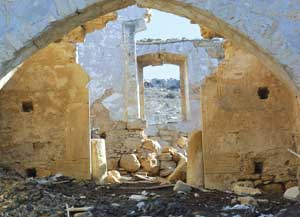 Since 1974 up to the present the number of functioning churches in the north has been reduced to four or five. Seventy-seven have been converted into mosques, after being stripped of all icons and church furnishings. The others have been pillaged or destroyed, used as stables, warehouses, garages, arsenals, mortuaries, hotels, art galleries, night clubs, or simply abandoned to their fate. The number does not include fifty sacred buildings whose condition is still not known because they are located in zones under direct military control, and others that have been demolished. Not even the numerous archaeological sites of the area have escaped theft and despoliation. Other reasons for alarm are the removal and selling, begun immediately after 1974, of mosaics, frescoes, thousands of icons – estimated at approximately 20,000 – today practically lost into the international market of smuggled art works. A phenomenon that is unfortunately common to many areas of the Middle East exposed to the winds of war but that in the north of Cyprus has had a systematic character for the past thirty-two years. The consequences are painfully obvious today.
Since 1974 up to the present the number of functioning churches in the north has been reduced to four or five. Seventy-seven have been converted into mosques, after being stripped of all icons and church furnishings. The others have been pillaged or destroyed, used as stables, warehouses, garages, arsenals, mortuaries, hotels, art galleries, night clubs, or simply abandoned to their fate. The number does not include fifty sacred buildings whose condition is still not known because they are located in zones under direct military control, and others that have been demolished. Not even the numerous archaeological sites of the area have escaped theft and despoliation. Other reasons for alarm are the removal and selling, begun immediately after 1974, of mosaics, frescoes, thousands of icons – estimated at approximately 20,000 – today practically lost into the international market of smuggled art works. A phenomenon that is unfortunately common to many areas of the Middle East exposed to the winds of war but that in the north of Cyprus has had a systematic character for the past thirty-two years. The consequences are painfully obvious today.
One of the more clamorous examples regards the church of Panagia Kanakaria, which held a work of art of inestimable value. Its apsidal mosaic, from the period of Justinian (dated between 525 and 530), was one of the few images in the eastern Mediterranean that had survived the fury of the iconoclasts, but in 1979 it was removed and broken up into pieces. It represented Christ in the arms of the Virgin seated on a throne, surrounded by the archangels Michael and Gabriel and thirteen medallions with the faces of Christ and the apostles. Four pieces re-emerged in Europe in 1988. A Turkish art dealer, Aydin Dikmen, offered them to the American antique dealer Peggy Goldberg, concluding the transaction for a million dollars. But when Goldberg, through Archduke Geza of Hapsburg and his Geneva auction house, contacted Marion True, director of the Paul Getty Museum in Malibu, offering to resell the mosaics for the sum of 20 million dollars, the Museum informed the American authorities and the Cypriot Church. Today the pieces, returned by the United States courts to the legitimate owner, are on show in the Byzantine Museum of Nicosia. But the rest of the mosaic is untraceable, that is if the rudimentary procedure of separation from the wall did not cause the destruction of a good part of the work. «The odyssey of the mosaics of the church of Kanakaria», wrote the German Byzantine expert Klaus Gallas in 1990 in the Frankfurter Allgemeine Zeitung, on his return from a trip to northern Cyprus, «represents only one of thousands of examples of vanished works that only on rare occasions can have been recognized as stolen works of art».
The famous Byzantine monastery in the town of Kalogrea, known by the name of Antiphonitis, has become the symbol of the destruction of the artistic and ecclesial heritage of northern Cyprus. Its splendid frescoes, dating between the 12th and 15th centuries, were cut into small pieces to be sold to private collectors. The enormous representation of the Second Coming or the monumental portrayal of the Tree of Jesse and some scenes from the Life of Mary are by now lost forever. The Church of Cyprus has only managed to recover some fragments, while others remain hidden in unknown private collections. And when they re-emerge here and there, in the stocks of the western auction houses, long legal battles begin to recover them and restore them to Cyprus. An operation that does not always succeed: in 1995 a Dutch court pronounced against the repatriation of four precious icons from the church of Antiphonitis. Attempts have also failed to bring back to Cyprus a door from the iconostasis of the church of Agios Anastasios, in Peristerona, near the city of Famagosta, currently on show in the Japanese College of Art in Osaka.
The thirty-eight 13th century pieces removed from the church of Agios Eufemianos, in the village of Lyssi, sold to the Menil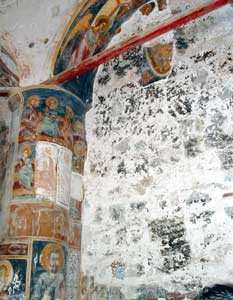
Foundation of Texas, and exhibited today in the Foundation’s museum in Houston, were luckier. Recomposed and restored, the frescoes depicting Christ Pantocrator and the Virgin, must be given back to Cyprus by 2012 through an agreement between the Orthodox Church of Cyprus and the American Foundation. But only very few of the 20,000 icons that disappeared from the churches of the north have been recovered. There have been a number of cases in which the Turkish-Cypriots themselves have rescued and given back to the Orthodox Church precious icons coming from the north.
The role of Europe
The cultural institutions of the country are now trying to involve European public opinion, in the hope that a way can quickly be found to conserve and recover a heritage that risks being definitively wiped out. And a lot could be done were it possible to obtain permits to restore and conserve the architectural structures and frescoes still present in situ from the danger of crumbling or fresh plundering, and if a solution is found to the dispute whereby Turkey does not recognize ownership by the Orthodox Church of Cyprus of these sacred buildings.
Europe, for its part, is beginning to respond. After last July’s resolution of the Parliament of Strasburg, in December the European Commission approved the project for a systematic cataloging of religious monuments in northern Cyprus and a quantification of the damages resulting from war and pillage so as to go ahead with restoration and safeguarding. And during the recent visit to Cyprus of the President of the Parliamentary Assembly of the Council of Europe, Renè Van der Linden, the Cypriots offered the Commission the database created over the years and asked Van der Linden to strive to obtain permission for experts to visit the fifty churches located within the military zones of the north. They also made it clear that representatives of all the interested religious groups could participate with the Orthodox: Latin Catholics and Maronites, Anglicans, Protestants, Armenians and Jews, owners of their respective places of worship, so that everyone may contribute to the restoration and the maintenance of these buildings.
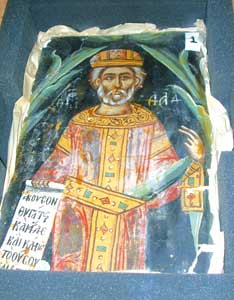 An unexpected encounter
An unexpected encounter
But the visit of Van der Linden contributed also to the opening of talks between the religious leaders of the island. On 21 February last, at the Ledra Palace Hotel, the UN command center which monitors the line of demarcation between south and north, the first official meeting took place between Chrysostomos II, new Orthodox Archbishop of Cyprus, and Ahmed Yonluer, religious head of the Turkish-Cypriots. It was due to the President of the Parliamentary Assembly of the Council of Europe that the delicate topic of the churches of the north was “discreetly” put on the agenda. Progress that certainly could not be taken for granted up to a short time ago. The archbishop expressed the need to undertake restoration work on an immense scale. Yonluer gave signs of a prudent openness, proposing to begin from the monastery of Saint Andrew Apostle, and asked in exchange that a hodja, a Muslim religious, be allowed to reside permanently in Hala Sultan Tekke, a popular place of pilgrimage for the Muslims of Cyprus on the bank of the salt lake of Larnaka, in the south of the country. Chrysostomos II declared himself willing for Muslim clergy to reside in all the sites of Muslim worship in the south, but Yonluer stressed the need to proceed by small steps. At all events, the meeting was cordial. The archbishop stated that he had found in Yonluer «a friend unknown till now». And he added: «We have both expressed our determination to work for the restoration and the maintenance of the religious monuments in both parts of the island».
Turkey’s advance towards European entry cannot fail to pass this way also. And the issue of the churches of Cyprus could be an occasion, for Ankara also, to persuade the countries that are more reluctant about its entry to the EU. Without trials of strength on anybody’s part, but through effective dialogue on concrete matters. «The process of European integration is by its nature a peace process», comments Ambassador Erato Kozakou-Marcoullis, Director of Affairs for the Cypriot Question in the Foreign Ministry of Nicosia: «Because of this», she concludes, «despite the many unresolved problems, I am optimistic».
Source: http://www.30giorni.it/us/articolo.asp?id=13541
Πολιτιστικό Ίδρυμα Αρχιεπισκόπου Μακαρίου Γ΄
Σχεδιασμός και Φιλοξενία @ LogosNet
